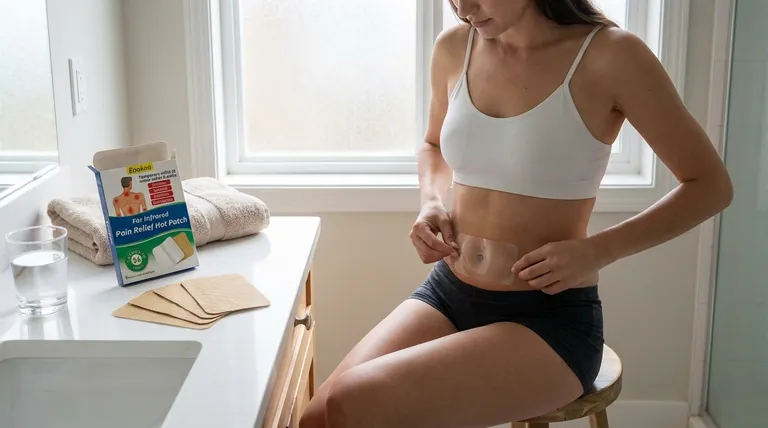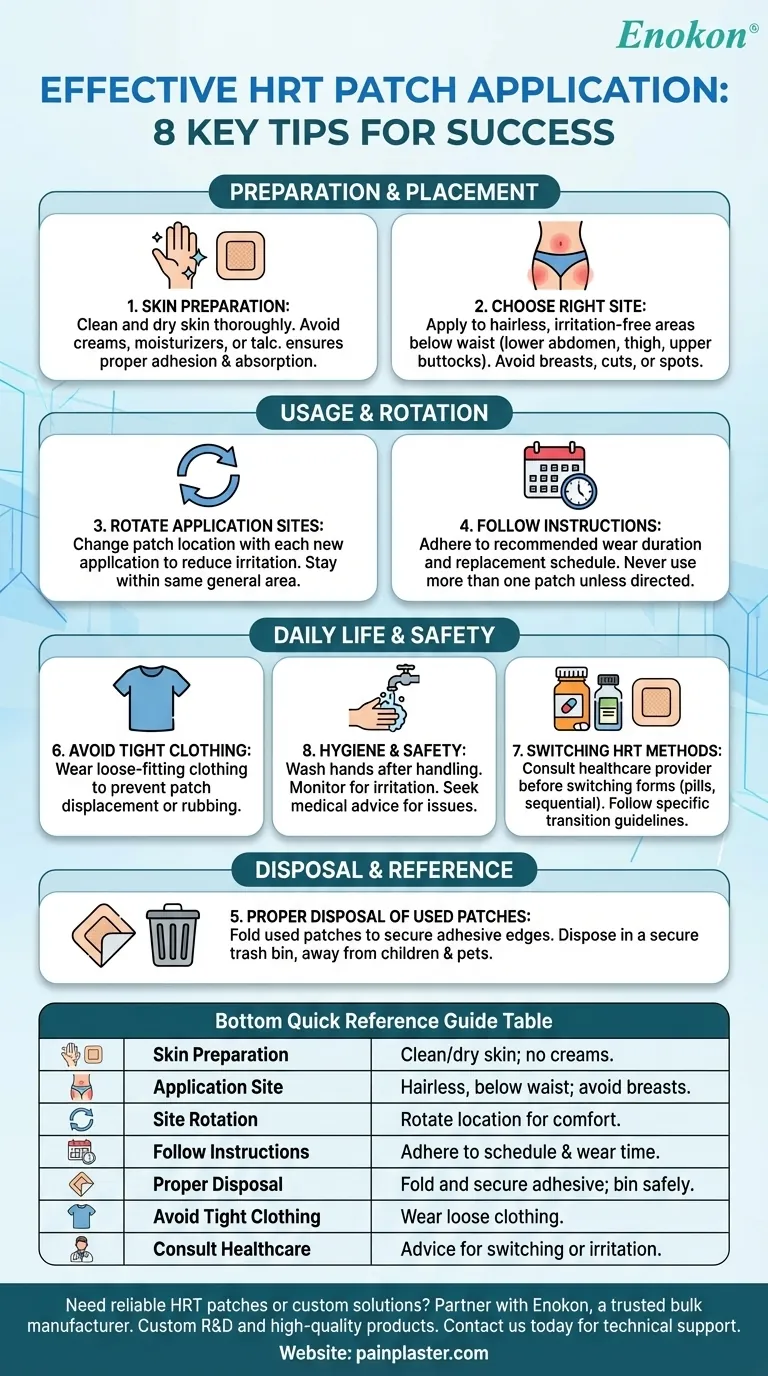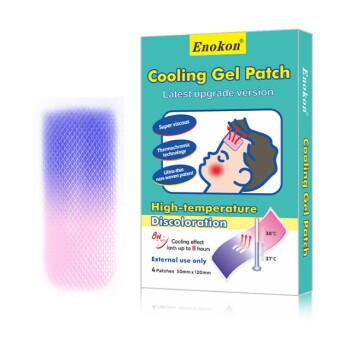Applying HRT (Hormone Replacement Therapy) patches correctly is crucial for ensuring their effectiveness and minimizing potential side effects. Key tips include preparing the skin properly by cleaning and drying it, choosing an appropriate application site (such as the lower abdomen or upper buttocks), and rotating sites to avoid irritation. It's important to follow the manufacturer's instructions regarding wear duration and disposal to prevent misuse. Additionally, avoiding certain areas like the breasts or irritated skin and refraining from using creams or moisturizers before application can enhance absorption. Proper disposal methods, such as folding used patches to secure adhesive edges, help ensure safety for others.

Key Points Explained:
-
Skin Preparation
- Clean and dry the skin thoroughly before applying the patch to ensure proper adhesion and absorption.
- Avoid using creams, moisturizers, or talc on the application site, as these can interfere with the patch's adhesive and effectiveness.
-
Choosing the Right Application Site
- Apply the patch to hairless, irritation-free areas below the waist, such as the lower abdomen, thigh, or upper buttocks.
- Avoid areas with cuts, spots, or existing skin irritation, as well as the breasts, to prevent uneven absorption or discomfort.
-
Rotation of Application Sites
- Rotate the patch location with each new application to reduce the risk of skin irritation or sensitivity.
- Stay within the same general area (e.g., lower abdomen or buttocks) for consistent hormone absorption.
-
Following Manufacturer Instructions
- Adhere to the recommended wear duration (usually once or twice weekly) and replacement schedule.
- Do not use more than one patch at a time unless specifically instructed by a healthcare provider.
-
Proper Disposal of Used Patches
- Fold used patches so the adhesive edges stick together to prevent accidental exposure.
- Dispose of them in a secure trash bin, out of reach of children or pets, to avoid misuse.
-
Avoiding Tight Clothing
- Wear loose-fitting clothing over the patch to prevent it from rubbing off or causing irritation.
-
Switching HRT Methods
- Consult a healthcare provider before switching from other HRT forms (e.g., pills or sequential therapy) to patches.
- Follow specific guidelines, such as waiting until the end of a cycle when transitioning from sequential HRT.
-
Hygiene and Safety
- Wash hands after applying or handling the patch to prevent accidental transfer of hormones.
- Monitor the application site for signs of irritation or allergic reactions and seek medical advice if needed.
For those experiencing discomfort, consider complementary options like heating patches for cramps to alleviate localized pain while using HRT patches. Always prioritize medical guidance for personalized recommendations.
Summary Table:
| Key Tip | Details |
|---|---|
| Skin Preparation | Clean and dry skin; avoid creams/moisturizers to ensure adhesion. |
| Application Site | Use hairless areas (lower abdomen, buttocks); avoid breasts/irritated skin. |
| Site Rotation | Rotate locations to prevent irritation while staying in the same general area. |
| Follow Instructions | Adhere to wear duration and disposal guidelines. |
| Proper Disposal | Fold used patches to secure adhesive edges; dispose safely. |
| Avoid Tight Clothing | Wear loose clothing to prevent patch displacement. |
| Consult Healthcare | Seek advice before switching HRT methods or if irritation occurs. |
Need reliable HRT patches or custom solutions? Partner with Enokon, a trusted bulk manufacturer of transdermal patches and pain plasters for healthcare distributors and brands. Our expertise in custom R&D ensures high-quality, effective products tailored to your needs. Contact us today to discuss your requirements and benefit from our technical support!
Visual Guide

Related Products
- Far Infrared Heat Pain Relief Patches Transdermal Patches
- Heat Relief Capsicum Patch for Lower Back Pain Relief
- Heating Pain Relief Patches for Menstrual Cramps
- Far Infrared Knee Pain Patch Heat Patches for Pain Relief
- Far Infrared Pain Patch Relief Pain Reliever for Back
People Also Ask
- What are the key features of the Deep Heat Pain Relief Back Patch? Get Up to 16 Hours of Drug-Free Relief
- Can heat patches be used for fresh injuries? Avoid This Common Mistake for Faster Recovery
- How quickly does the Deep Heat Pain Relief Back Patch activate and how long does it provide warmth? Get 16-Hour Relief
- What did the UK Million Women Study find regarding transdermal versus oral hormone therapy? A Safer Choice for Gallbladder Health
- How do Deep Heat Pain Relief Patches provide pain relief? Discover the Drug-Free Mechanism

















